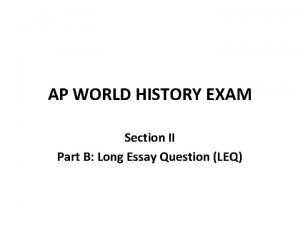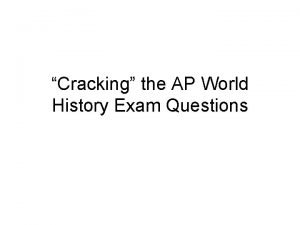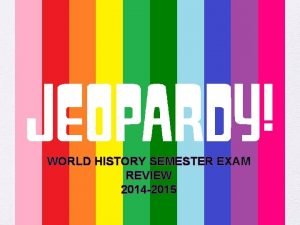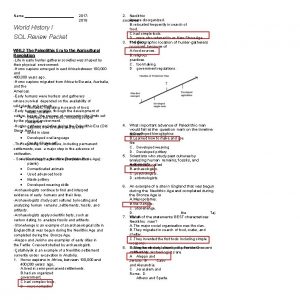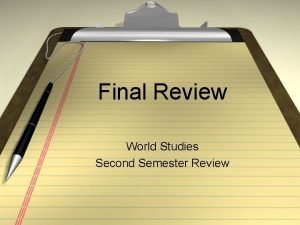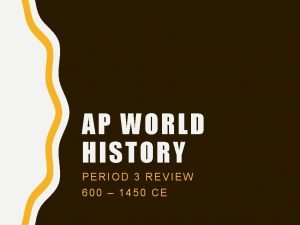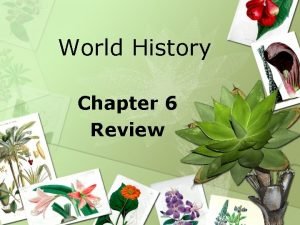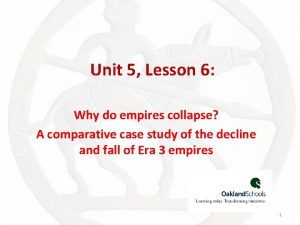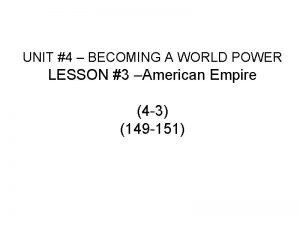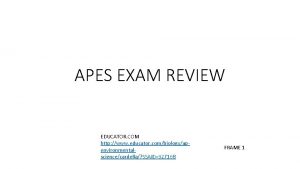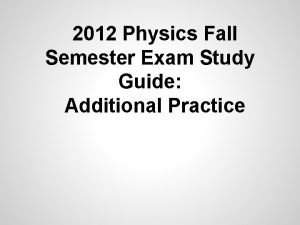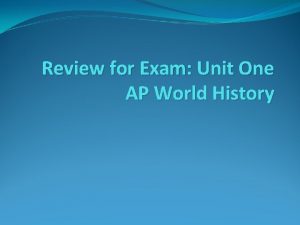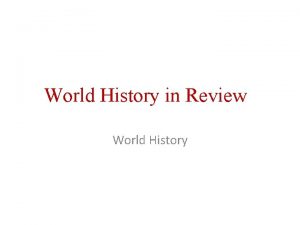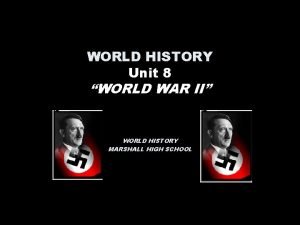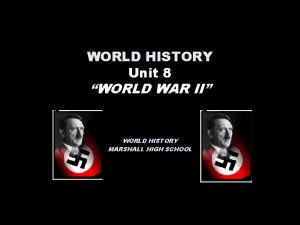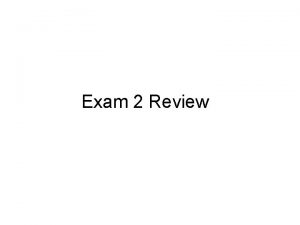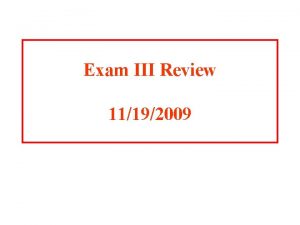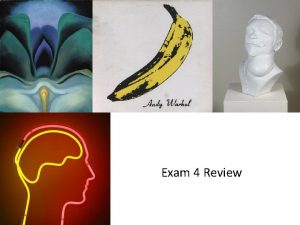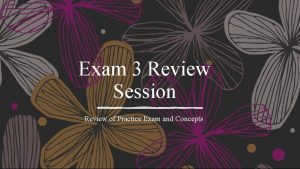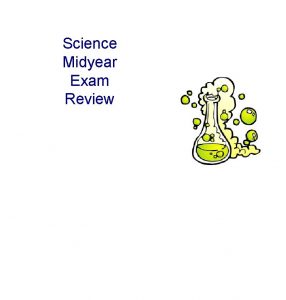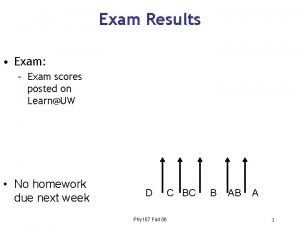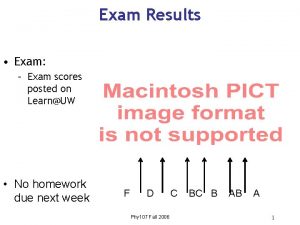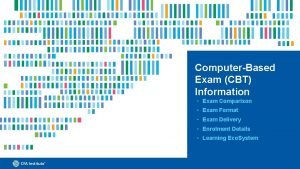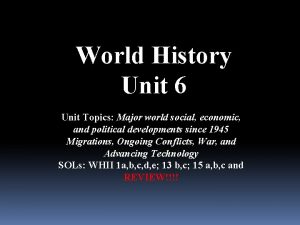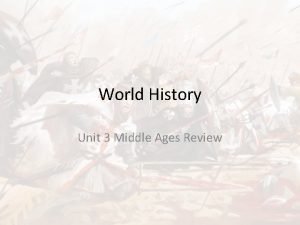Unit 1 Exam Review for AP World History










































- Slides: 42

Unit 1 Exam { Review for AP World History

1) What transformation was most responsible for moving humans toward civilization? A) writing B) hunting and gathering C) agriculture D) bartering C With agriculture, human beings were able to settle in one spot and focus on particular economic, political, and religious goals and activities

2) This philosophy established the idea of filial piety as a metaphor for society. A) Daoism B) Legalism C) Confucianism D) Buddhism C At the heart of Confucianism is a system of mutually beneficial relationships based on societal status and the idea that everyone must correctly fulfill their societal duty.

3) _____ are the highest Hindu caste members, while ______ are the lowest and were considered to be “outside” of the caste system. A) Sudras; Untouchables B) Kshatriya; Brahmins C) Vaisyas; Sudras D) Brahmins; Untouchables D The Brahmins were the priests, while Untouchables (or Harijan) were individuals with rejected and outcast jobs in society.

4) The spread of Greek culture throughout the eastern Mediterranean and Southwest Asia is know as: * Bonus point if you know the historical term for this process* A) Grecophilia B) Golden Age C) Pax Romana D) Hellenism D This was a major impact of Alexander the Great’s conquests. CULTURAL DIFFUSION

5) The start of sedentary agriculture started in ______ first but developed independently in other areas A) China B) Americas C) Indus River Valley D) Mesopotamia D Historians believe that agriculture appeared independently in Mesopotamia, in China, and in the Americas; Mesopotamia developed farming first.

6) Bureaucrats from non-aristocratic groups who were trained and well-versed in Confucianism would have most likely have been in which dynasty? A) Han B) Zhou C) Qin D) Shang A The Han continued with the Qin’s departure from traditional aristocratic power and created a civil service examination

7) Over time, this structure intensified in India in its rigidity and began to differ from region to region. A) Hinduism B) Buddhism C) Regionalism D) Caste System D The caste system developed numerous sublevels as it developed, and often local idiosyncrasies prevailed

8) Who begins the Pax Romana, a period of Roman power and prosperity? A) Pericles B) Julius Caesar C) Augustus Caesar D) Marcus Aurelius C

9) This civilization is what historians call a “mother civilization. ” A) The Mayans B) The Olmecs C)The Romans D) The Persians B The Olmecs were the core or mother civilization for other civilizations in Mesoamerica

10) In early China, cultural integration and unity were provided by which development? A) a common system of writing and speech B) a rigid social structure C) written guidelines of behavior D) a bureaucracy A The Zhou standardized spoken Mandarin, while the Qin standardized written Mandarin.

11) This group in China, despite their material success and increased wealth, ranked below peasants and had little societal influence. A) Merchants B) Bureaucrats C) Slaves D) Farmers A The merchant class’s low prestige was in large part a product of the Confucian distaste for the lives of moneymaking that took no education.

12) Buddhism is DIFFERENT from Hinduism in all of the following ways EXCEPT: A) The belief that all people are unequal B) Attitudes towards conversion C) Number of branches and divisions D) Belief in reincarnation D Both Buddhism and Hinduism believe that a constant cycle of reincarnation will occur until the individual achieves nirvana (B) or moksha (H).

13) Greek philosophers, like Socrates, Plato, and Aristotle, placed an emphasis on what concept in order to understand human nature? A) narcissism B) hedonism C) rationality D) aesthetics C Greco-Roman thinkers emphasized reason and logic in attempts to find answers to central philosophical questions

14) What two things provided cultural continuity for India throughout their political turmoil in the classical period? A) Hinduism and the caste system B) Caste system and Buddhism C) Hinduism and agriculture D) Caste system and agriculture A

15) This civilization’s writing has not been deciphered. A) Mohenjo-Daro B) Harappa C) Huang He D) Sumer B

16) This was a key political tenet of Shi Huangdi and Qin rulers. A) centralization of power B) trade C) Confucianism D) bureaucratic power A Shi Huangdi makes a deliberate departure from Chinese feudalism after observing the eventual weakness of that system via the Era of the Warring States, and centralized power.

17) The impending invasion of Alexander the Great’s empire prompts the development of this empire. A) Gupta B) Indus River Valley C) Bactria D) Mauryan D This empire began as a reaction to the Alexandrian state of Bactria along the Indus River

18) Unlike this group in Classical China and India, in Greece and Rome this group was considerably freer in that they could control property and be active in small family businesses. A) Women B) Farmers C) Slaves D) Traders A

19) Throughout – and largely a result of – the decline of the classical civilizations, an increase is visible in all of the following EXCEPT: A) Christianity B) Greco-Roman paganism C) Buddhism D) Islam B

20) Unlike Mesopotamia, Egypt retained this throughout most of its history. A) an effective method of irrigation B) a coherent system of writing C) metal tools D) a unified political state. D The Egyptians remained territorially unified for most of their history, while Mesopotamia was often divided into smaller regions and kingdoms. )

21) Chinese belief systems differ from single deity religions in their diverse religious approaches, as well as their worship of this. A) Shintoism B) ancestor worship C) Legalism D) Hinduism B

22) These spherical shrines to Buddha were erected during the classical period in India. A) tripitaka B) vedas C) gita D) stupa D

23) This war/series of wars proved that Rome had organized and powerful rivals that could – and did – oppose Roman expansion in the area. A) Persian War B) Peloponnesian War C) Periclesian War D) Punic War D The Punic Wars were a series of three wars between the Roman Republic and the Carthaginian Empire of North Africa over control of the Mediterranean.

24) All of the following played a major role in disrupting classical civilizations EXCEPT: A) Nomadic invasions, like those by the Xiongnu and the White Huns B) Epidemics C) Weak leadership D) Increasing dependency on central governments D The Three Kingdoms period, latifundias, and collapse of the decentralized Gupta Empire indicate a lack of interest/trust in central and broad governments to provide for the people.

25) In Chinese tradition, the Mandate of Heaven refers to: A) Chinese hatred of merchants B) Belief in many gods C)Eternal authority of a ruling dynasty D) Divine blessings of the rule of an emperor D

26) The Zhou Dynasty ended after: A) The Era of the Warring States. B) nomadic invaders overthrew the Zhou. C) The Yangtze River flooded, destroying crops and causing a peasant revolt. D) an outbreak of yellow fever killed many of the Zhou rulers. A

27) During the classical era in India, all of the following occurred EXCEPT: A) religious authorities often allowed human autopsies in the name of research. B) the concept of zero was invented. C) Indians developed a university. D) spherical shrines to Buddha, called stupas, were erected. A

28) In comparison to the Hindus, Jews, and Chinese, in terms of religion the Greeks: A) developed a compassionate system similar to Buddhism B) avoided portraying gods with human characteristics C) never developed a major long-lasting religion D) most resembled Hinduism’s polytheism with its caste system C

29) All of the following led to Rome’s collapse EXCEPT: A) Unstable leadership from weak rulers B) High taxes and inflation C) Droughts, famines, and plagues D) Invasions from the Carthaginians D The Punic Wars were during the Roman Republic.

30) Roman culture: A) owed a great deal of its diversity to trade with China. B) borrowed heavily, especially from Greek culture. C) influenced heavily the culture of Africa and Southwest Asia. D) developed in relative isolation. B

31) Identify the statement that best gives an explanation of the Neolithic Revolution. A) In Northern Europe, nomadic hunters began to produce more complex stone tools. B) In East Asia, early settlers began using markings on turtle shells and bones as an early form of record keeping. C) In the Middle East, people began to settle in small communities and practice agriculture. D) In Mesoamerica, agricultural settlements saw an expansion of their populations, and the beginning of more complex governments C

32) In China, Confucianism emphasized the idea that: A) societal harmony could be achieved by the proper behavior of each member of the family/society. B)equality should exist among all members of society C) salvation could be attained by prayer, meditation, and good deeds D) individual goals should be placed ahead of the needs of the group A

33) How might settlements in the Neolithic Age affect birth rates? A) There was no effect. B) There was no effect on birth rates but a decrease in death rates. C) There was an increase in birth rates due to security and food supply. D) There was more disease, so birth rates stayed very low. C

34) All of the following are major African civilizations during this period EXCEPT: A) Kush B) Ethiopia C) Crete D) Axum C

35) Identify the major trade network between Asia and Europe. A) Trans-Saharan caravans B) The Silk Roads C) Indian Ocean sea lanes D) Mediterranean sea lanes B

36) What statement defines the dynastic cycle? A) Chinese governments ruled based on the power of a single family. B) While at first militarily powerful, as a dynasty came to depend more on Confucian scholars than generals, it became weaker militarily and would eventually fall to foreign invasion. C) Chinese government depended upon economic growth to sustain power, and as the economy declined, based on cycles, so too did the dynasties. D) Initially a Chinese government enjoyed prosperity and economic growth, but over time corruption, internal disasters, and external invasions all eroded a dynasty’s power. D

37) What statement accurately compares the government of the Han dynasty with that of the Roman Republic? A) Power in the Han dynasty was concentrated in a centralized bureaucracy dominated by Confucian scholars while power in the Roman Republic was shared among major landowning families of Rome. B) Power in the Han dynasty rested solely with the emperor while in Rome all citizens were able to express their opinions and influence government. C) Power in the Han dynasty was concentrated in a centralized bureaucracy dominated by Confucian scholars while in the Roman Republic all citizens shared power in governmental decisions. D) Power in the Han dynasty rested in the hands of the military generals, while power in the Roman Republic rested in the hands of legion commanders and provincial governors. A

38) Identify the sacred text that originated from the Aryan people from central Asia. A) Vedas B) Moksha C) Samsara D) Dharma A

39) Identify the important original contribution of the Jewish culture to the civilizations in the Middle East and Mediterranean during the Classical Period. A) Monotheism B) Written legal code C) Phonetic alphabet D) Priest caste A

40) The following statements resulted from what cultural change? I – More reliable and abundant food supply II – job specialization based on a surplus of food III – development of a more formal social hierarchy A) The development of complex government B) The adoption of agriculture C) The development of metal tools D) The growth of complex, organized religion B

Tie Breaker: In what ways did the three philosophical movements of Classical China shape Chinese civilization? Write on your tablet and bring to Ms. Sheets. A) Confucianism – helped to curb political disorder by stressing respect for one’s superiors, a modest life for those in power, proper manners for all; cohesive bureaucracy B) Legalism – though it never had widespread appeal, Legalism’s emphasis on authoritarian tactics influenced political decision making C) Daoism – brought an ethical focus and an elaborate spirituality, focus on introspection, inner peace, and nature’s beauty
 World history spring final exam review answers
World history spring final exam review answers World history semester 2 exam review
World history semester 2 exam review Apwh final exam review
Apwh final exam review Unit 6 review questions
Unit 6 review questions Ap gov review final exam review
Ap gov review final exam review Us history final semester 2 review
Us history final semester 2 review Us history final exam study guide semester 1
Us history final exam study guide semester 1 World history and geography final exam study guide
World history and geography final exam study guide Ap world history exam format
Ap world history exam format Apwh course and exam description
Apwh course and exam description Format of ap world history exam
Format of ap world history exam World history 1st semester final review answers
World history 1st semester final review answers World history semester 1 final exam study guide answers
World history semester 1 final exam study guide answers World history semester exam
World history semester exam World history ii sol review packet
World history ii sol review packet World history semester 2 final review packet
World history semester 2 final review packet Ap world history 600 to 1450 review
Ap world history 600 to 1450 review Plato believed in rule by ______.
Plato believed in rule by ______. Ap world history jeopardy review game
Ap world history jeopardy review game Unit 1 test review us history
Unit 1 test review us history Ap world history chapter 25 africa and the atlantic world
Ap world history chapter 25 africa and the atlantic world Bad world tour
Bad world tour Unit 5: lesson 6 - review questions
Unit 5: lesson 6 - review questions World history unit 4 lesson 3
World history unit 4 lesson 3 Unit test unit test review algebra 2
Unit test unit test review algebra 2 Exam review template
Exam review template Spanish 2 final review
Spanish 2 final review Spanish final exam review packet answer key
Spanish final exam review packet answer key Pltw human body systems final exam review
Pltw human body systems final exam review Poe practice test kinematics answers
Poe practice test kinematics answers Innovait akt questions
Innovait akt questions Ied final exam review
Ied final exam review Hbs practice test
Hbs practice test Principles of business final exam answer key
Principles of business final exam answer key Spanish 2 review packet
Spanish 2 review packet Environmental science final study guide
Environmental science final study guide Apes exam review
Apes exam review English 2 final exam review
English 2 final exam review Review for exam pronouns
Review for exam pronouns Physics fall final exam review
Physics fall final exam review Zoology semester 1 exam review answers
Zoology semester 1 exam review answers Eduqas oer
Eduqas oer Physics fall semester review answers
Physics fall semester review answers








